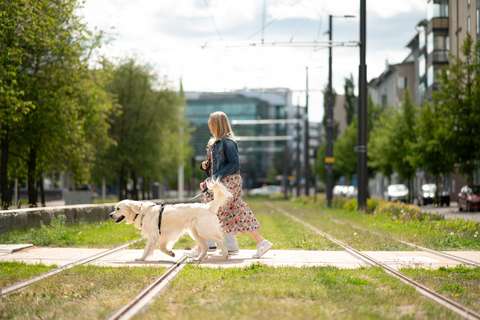Developing Espoo’s energy system enables sustainable growth

Rapid population growth, along with the electrification of transport and district heating, brings new challenges for the development of Espoo’s energy system. The energy system forms the foundation of the city’s vitality, supports the achievement of climate goals, and enables smooth everyday life for residents, businesses and other operators in Espoo.
Espoo’s population is growing rapidly, and the simultaneous electrification of transport and district heating creates significant pressure on the energy system. The City of Espoo does not own an energy company, which means the energy system is not under the city’s control in the same way as in municipalities that own an energy company wholly or partly. In a growing city like Espoo, the development of the energy system therefore requires cooperation among multiple partners.
In Espoo, the energy system consists of Fingrid’s nationwide main grid, Caruna’s local distribution network, and Fortum’s district heating and cooling networks. More broadly, the energy system can be seen to include all buildings and operators involved in producing, consuming, storing or transferring energy.
Development of energy system supports Espoo’s growth and climate goals
Population growth and electrification in Espoo require investments in the development of the city’s energy system. Improving the energy system ensures the conditions for a growing city – investments in the power grid enable, for example, housing construction, new residential areas, the expansion of rail connections, and the electrification of transport. At the same time, strengthening the power grid reduces the risk of grid disturbances and failures. “A well-functioning energy system is a prerequisite for Espoo’s growth. It secures everyday life for residents, provides businesses with opportunities to grow, and helps us achieve our ambitious climate goals,” says Mayor Kai Mykkänen.
Doubling power grid’s capacity by 2030
In recent years, about one billion euros have been invested in developing Espoo’s energy system, and investments will continue in the coming years. Fortum is focusing its investments on the electrification of district heating and solutions that replace fossil fuels. About 80% of Espoo’s residents live in buildings heated with district heating, which makes the transition to low-emission heating methods particularly significant. Caruna is investing in increasing and modernising the capacity of the local distribution network, for example by developing the high-voltage network and building new substations. Fingrid, in turn, is developing the main grid to support growing electricity consumption and to improve supply security. One of the key main grid investments is a new 400 kV connection, of which the portion allocated to Espoo enables the city’s power grid capacity to double by 2030. The role of the City of Espoo is to facilitate the development of the energy system, for example through land use planning and granting permits.
Cooperation enables development
The City of Espoo, together with Caruna, Fingrid, Fortum and the Climate Leadership Coalition, examined the impacts that investments in the energy system have had so far and what future development of the system will make possible. The study describes how improvements in the energy system affect Espoo’s economy, employment situation and climate goals. The results are also more broadly connected to how cities can attract green investments to Finland.
The development of the energy system is based on close cooperation between different operators. Cooperation makes it possible to take regional development needs into account and to combine the perspectives of different parties into a shared objective.
The Espoo Climate Community (COMET) project is funded by the EU Climate Mission Pilot Cities program. Pilot Cities is a learning and piloting program for cities selected for the EU Climate Mission, in which cities and their partners seek systemic solutions to climate challenges.